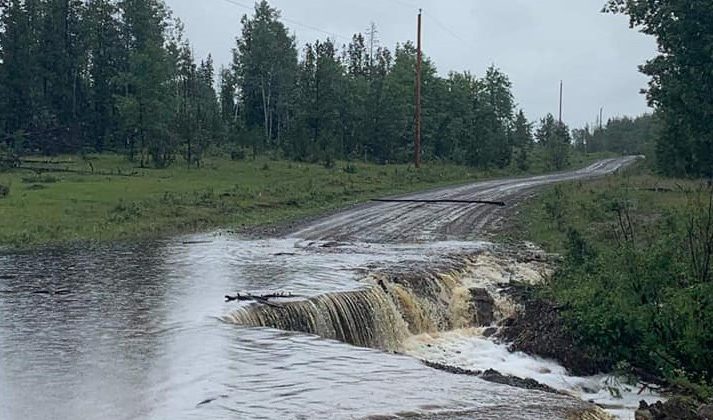The Cariboo Regional District (CRD) was recently presented its 2020 Flood and Landslide Recovery Plan.
The plan, which Wylie Bysted and Stephanie Masun, helps situate disaster impacts and outlines how households can start moving forward after a disaster.
Masun, a community liaison coordinator with the Cariboo Regional District, said that the recovery process comprises four main pillars.
“It’s people and community, environment, economy, and infrastructure,” she said. “When we write a community recovery plan, we try to poll and understand and then relate back to what the impacts were in those four pillars and what some of the solutions are that can be readily available, and then what some of the longer-term needs might be.”
1. People and Communities – physical, mental and social wellbeing; health and safety; mental health; interim housing; community psychosocial, emotional, cultural and spiritual wellbeing
2. Economy – small, medium and large enterprises; tourism; agriculture; cultural livelihood; broader economy
3. Environment – land degradation and contamination; biodiversity and ecosystems impact; natural resource damage and loss
4. Infrastructure – private and public physical infrastructure; residential and commercial buildings; infrastructure planning; mitigation and protective works; critical infrastructures such as utilities, communication networks, roads and bridges, and transportation
Masun said while the economy, environment, and infrastructure parts of the plan are important, the health both mentally and physically of those residing in the CRD is the most important thing and making sure the people have the tools to be resilient.
“Mental health and wellness is really top of mind. We’ve had fires, we’ve had floods, and we also currently have a pandemic. These are tremulously stressful, and people don’t always notice what some of the stresses are in themselves, but maybe they start to see them in their friends and family,” she said. “Resilience being something from the household level to the community level as well, and those resources or tools, or just simple information about how to navigate through recovery and really safeguard your mental health. Make sure you are checking in, and to make sure that you are staying connect with your circle of support and look for resources so that you have full control over your situation again.”
She said being prepared can help people be better prepared to be resilient.
“Pre-disaster preparedness. It’s messaging we hear often, and we sometimes aren’t as tuned into it because our daily lives are busy and complex,” she said. “Having a 72-hour kit on hand, having a winter driving kit in your car, making sure you would know what to do in an extended power outage, having some information about how to clean up after a flood, and understanding what some of the hazards and risks are in your community and in your area can be helpful.”
When another disaster happens, there will be people from the CRD there to help.
“I think it’s just important for people to know that after a disaster there is a recovery manager on hand to answer questions and help them navigate to the resources that exist and to start flagging areas where resources don’t currently exist,” she said. “The CRD will also have a recovery button on their homepage where all the information and the programs will be laid out, so it is a communication coordination that the regional district does continue to maintain during and after an event for an extended period of time.”
For a look at the full report click here.
Something going on in the Cariboo you think people should know about?
Send us a news tip by emailing [email protected].








